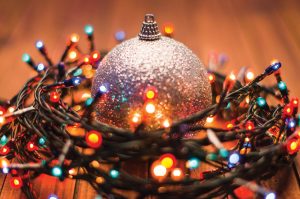 The holidays are just around the corner. And because displays go up earlier and earlier in the stores, you’ve no doubt been tempted to purchase new holiday lights.
The holidays are just around the corner. And because displays go up earlier and earlier in the stores, you’ve no doubt been tempted to purchase new holiday lights.
Light-emitting diodes, more commonly known as LEDs, consume far less electricity than incandescent bulbs, and decorative LED light strings such as Christmas tree lights are no different. Not only do LED holiday lights consume less electricity, they also have the following advantages:
- Safer: LEDs are much cooler than incandescent lights, reducing the risk of combustion or burnt fingers.
- Sturdier: LEDs are made with epoxy lenses, not glass, and are much more resistant to breakage.
- Longer lasting: The same LED string could still be in use 40 holiday seasons from now.
- Easier to install: Up to 25 strings of LEDs can be connected end-to-end without overloading a wall socket.
Here’s an example. Say you want to light a six-foot tree for 12 hours a day for 40 days.

other ways to save this holiday season
- Use timers: Further maximize holiday lighting savings by using timers to limit the number of hours your holiday lights are on.
- Turn it off: Be sure to turn off indoor lighting decorations overnight and when leaving the house.
- Buy ENERGY STAR®: When shopping for gifts or home improvements, look for the ENERGY STAR label -— the federal government’s symbol of energy efficiency — on electronics, home office equipment, appliances and other products to cut related electricity bills by up to 30 percent. Find information on dozens of ENERGY STAR-qualified products at www.energystar.gov.
*Assumes 50 C-9 bulbs and 200 mini lights per tree, with electricity at 11.9 cents per kilowatt-hour (kWh) (AEO 2012 Residential Average). Prices of lights based on quoted prices for low volume purchases from major home improvement retailers. All costs have been discounted at an annual rate of 5.6 percent. Life span assumed to be three seasons (1,500 hours) for non-LED lights.
Source: Department of Energy (www.energy.gov)



